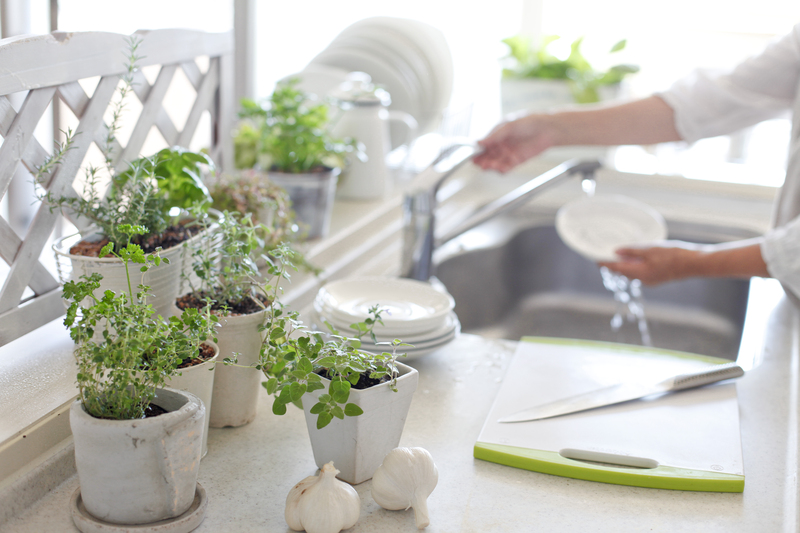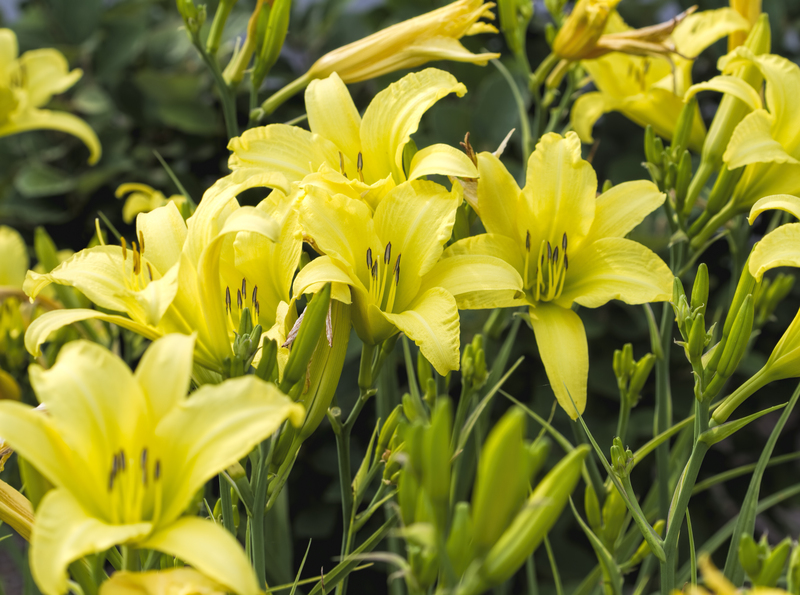Expert Advice: 3 Tips for Winning the War on Weeds
Posted on 21/09/2025
Expert Advice: 3 Tips for Winning the War on Weeds
Weeds--those relentless intruders in every garden and landscape--can turn a green paradise into a battleground. Whether you're a weekend hobbyist or a serious horticulturist, winning the war on weeds is essential to the health, beauty, and productivity of your outdoor spaces. Weeds compete with your cherished plants for nutrients, water, light, and space, often spreading quickly if left unchecked.
In this comprehensive, SEO-optimized guide, you'll discover expert advice and proven strategies to control weeds, prevent future outbreaks, and keep your lawns and gardens looking their best all season long. From eco-friendly approaches to simple, effective techniques, these are the three crucial tips you need to beat those pesky invaders for good!

Why Is Weed Control So Important?
No garden can thrive when it's overrun by weeds. These uninvited guests not only mar the aesthetic appeal of your landscape; they also threaten the health and survival of your desired plants. Weed management is fundamental because:
- Weeds outcompete other plants for vital resources: nutrients, sunlight, and moisture.
- They can harbor pests and diseases that affect vegetables, flowers, and shrubs.
- Fast-growing weeds can quickly take over, requiring more effort and time to regain control.
- Some weed species are toxic to pets or humans and can be invasive, threatening native ecosystems.
With that in mind, let's delve into the top three expert weed control tips you need to win this never-ending battle.
Tip #1: Cultivate Healthy Soil and Dense Plant Coverage
Why Soil Health and Density Are Essential for Weed Suppression
The foundation for effective weed prevention begins below the surface--with your soil. Healthy, nutrient-rich, and well-structured soil allows your chosen plants to thrive and create a dense canopy that naturally chokes out weeds. Sparse, struggling plants leave bare earth exposed, providing an open invitation for weed seeds to germinate.
Soil Improvement Strategies for a Weed-Resistant Garden
- Test your soil: A soil test reveals nutrient imbalances, pH issues, and deficiencies that can impede desired plant growth. Amending your soil as recommended will help your plants grow strong, which discourages weeds.
- Enrich with compost or organic matter: Adding compost improves soil structure and fertility, benefiting your plants and making it harder for weeds to establish themselves.
- Choose competitive, fast-growing ground covers: Planting dense perennials, grasses, or low-growing cover crops provides a living mulch that blocks weed seeds from sunlight, thus hampering their growth.
- Design strategic, full plantings: Arrange annuals, vegetables, and shrubs at correct intervals so foliage quickly creates shade across the soil, leaving less room for weeds to sneak in.
Turf Care for Lawns: Outcompeting Weeds
For lawns, a few simple practices can help you win the war on weeds naturally:
- Mow high: Set your mower to the upper recommended height for your grass type. Taller grass shades soil and prevents weed seeds from sprouting.
- Water deeply but infrequently: This encourages deep grassroots, making your turf more resilient and better at outcompeting weed seedlings.
- Overseed thin areas: Filling bare spots with fresh grass seed each fall ensures thick, lush coverage that leaves little space for weeds.
Remember: A strong, healthy landscape is the best long-term weed strategy--outnumber and outcompete the enemy!
Tip #2: Mulch--Nature's Secret Weapon for Weed Control
How Mulch Prevents Weeds
Mulching is one of the most effective and eco-friendly ways to block out weeds in gardens, flower beds, and landscape borders. An even layer of mulch forms a physical barrier that:
- Blocks sunlight: Weed seeds need light to germinate. Mulch prevents light from reaching the soil, suppressing weed growth.
- Conserves soil moisture: Less frequent watering is required, reducing stress on your plants and curbing the advantage weeds might gain in dry, exposed soil.
- Insulates soil temperatures: Protects plant roots, encourages better growth, and helps prevent fluctuations that might favor weeds.
- Improves soil fertility: Organic mulches (like wood chips, bark, straw, or shredded leaves) break down over time, enriching the soil further.
How to Mulch for Maximum Weed Suppression
- Apply after weeding: Always remove existing weeds before mulching, or they may simply push through the new layer.
- Use the right thickness: Aim for a 2-4 inch layer. Too thin and light reaches weed seeds; too thick and you risk suffocating your desired plants or inviting pests.
- Mulch appropriately around stems: Don't pile mulch directly against plant stems or tree trunks--this can lead to rot or disease. Leave a small gap for airflow.
- Replenish annually: Biodegradable mulches decompose, so top up each year to maintain effectiveness and soil health.
Best Mulch Types for Weed Prevention
- Organic: Wood chips, shredded bark, straw, pine needles, composted leaves, grass clippings
- Inorganic: Landscape fabrics, gravel, black plastic sheeting (use with care and for specific situations)
Expert gardeners often alternate organic and inorganic mulch depending on the site and weed pressure. For flowerbeds and veggie gardens, rich, natural materials are usually the top choice.
Tip #3: Smart, Targeted Weed Removal and Ongoing Maintenance
The Right Timing for Weed Control
There's an old adage in gardening: "One year's seeding, seven years weeding." The meaning? If you let weeds flower and set seed, you'll battle their offspring for years to come. That's why timing is crucial for effective weed management.
- Weed early and often: The best time to remove weeds is when they are small and before they flower or set seeds.
- Target after rain: Pulling weeds from moist soil is far easier, as their roots are less likely to break and regrow.
- Stay consistent: Regular, weekly patrols with a hoe or hand tool prevent weeds from gaining a foothold.
Hand Pulling, Hoeing, and Specialized Tools
Not all weeds are created equal. For spot treatment and small infestations, hand pulling or using garden hoes and specialized weeders are highly effective. Here's how to maximize your success:
- Use the right tool for the weed type: Taprooted weeds (like dandelions or dock) require a forked tool that reaches deep. Spreading weeds (like crabgrass or purslane) are easily cleared with a sharp hoe or scuffle tool.
- Pull the roots, not just the tops: Many weeds will regrow from any root remnants left in the soil. Grasp the plant at its base and pull steadily to get the entire root system.
- Dispose responsibly: Don't compost weeds that have gone to seed--dispose of them with green waste or burn them if allowed in your area.
Organic and Targeted Herbicide Options
Sometimes, especially on larger properties or for stubborn perennial weeds, selective herbicide application may be needed. For eco-conscious gardeners, organic options such as vinegar-based sprays, boiling water, or flame weeders can provide spot treatment without broad chemical impact.
- Always follow manufacturer instructions: For any product, safety and effectiveness depend on correct use.
- Protect desired plants: Even organic solutions can damage valuable vegetation--apply with care.
- Rotate strategies: Avoid over-reliance on any one method to prevent weed resistance and maintain healthy soil biology.
Bonus Tips: Preventing Future Weed Invasions
- Don't let weeds go to seed: Deadhead or remove weed flowers before seeds mature.
- Maintain garden edges and pathways: Weeds often invade from neglected borders. Mulch or use weed barrier fabric in these areas.
- Check new plants and soil for hitchhikers: Inspect nursery plants and compost for hidden weed seeds before adding them to your garden.
- Minimize soil disturbance: Many weed seeds are dormant in the top layer of soil. Only dig or cultivate where necessary to avoid awakening them.
- Stay vigilant: The best weed control is ongoing attention--even a few minutes per week can prevent major outbreaks.

Common Weeds and How to Beat Them
Different weeds demand different strategies. Here are a few of the most common types found in gardens and lawns, with targeted tips to win your personal war on weeds:
- Crabgrass: Mulch bare spots in the lawn, mow high, and overseed to outcompete this summer annual.
- Dandelions: Use a narrow-bladed weeder to remove the deep taproot to prevent regrowth.
- Bindweed: Regular hoeing exhausts roots; never let this vine flower or set seed.
- Nutsedge: Improve lawn drainage--nutsedge thrives in wet, compacted soils.
- Purslane: Hand pull before flowers, and use a pre-emergent mulch layer.
Conclusion: Make Weed Management a Winning Habit
Winning the war on weeds is not a one-time event but an ongoing garden habit. By building healthy soil and planting densely, using mulch as an organic shield, and staying vigilant with smart, targeted weed removal, you'll cultivate a resilient, beautiful, and productive garden. Combining these expert tips for weed control creates an environment where your plants--not weeds--thrive.
The secret to success is consistency and early action. Start today, and enjoy a landscape free from unwanted invaders. Remember that prevention is the best cure for weeds--and the best time to start is now!
For more expert gardening advice and tips on maintaining a perfect lawn or garden, don't forget to bookmark this page and check back for future updates!

